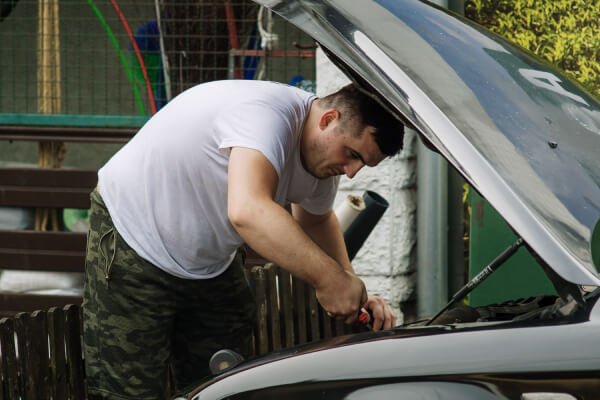
Picture this: You’re cruising down the highway, jamming to your favorite playlist, when suddenly—bam!—a distracted driver clips your rear bumper. Heart racing, you pull over, exchange info, and thankfully, no one’s hurt. But now your car’s looking a little worse for wear, and the big question hits: How long until it’s back in action? If you’ve ever been in a fender bender or something more serious, you know that the waiting game can feel endless. As someone who’s dealt with a couple of dings myself (including that time my old Civic got sideswiped in a parking lot), I get it. The truth is, there’s no magic number for car repairs after an accident—it all depends on the damage, the shop, and a bunch of other factors. But don’t worry; let’s break it down in a way that makes sense, so you can set realistic expectations and maybe even speed things up a bit.
The Step-by-Step Journey of Getting Your Car Fixed
Before we dive into timelines, it’s helpful to understand what actually happens behind the scenes at an auto body shop. It’s not just slapping on some paint and calling it a day; there’s a whole process that ensures your ride is safe and looking sharp again. Think of it like a well-choreographed dance, where each step builds on the last.
First up is the assessment and estimate. You drop off your car, and the pros give it a thorough once-over—checking for visible damage, hidden issues under the hood, and even snapping photos for insurance. This can take anywhere from a few hours to a full day, depending on how busy they are. Some places, like specialized collision centers, might whip up a free estimate in under an hour to get things rolling fast.
Next comes the insurance tango. If you’re filing a claim (and let’s face it, most of us are after an accident), the shop sends the estimate to your insurer for approval. This is where things can slow down—negotiations over costs, parts, or even whether something’s repairable versus replaceable. On average, this step might add 3 to 5 days to the clock. It’s frustrating, but hey, it’s better than footing the bill yourself.
Once that’s greenlit, it’s time for ordering parts. If your car needs new bumpers, fenders, or even airbags, the shop has to source them. For common models like a Toyota Camry, this could be quick—just a day or two. But if you’re driving something fancy like a Tesla or an older import, rare parts might take weeks to arrive, especially with supply chain hiccups we’ve all heard about post-pandemic.
Then the real magic happens: the actual repairs and painting. Techs fix dents, straighten frames if needed, replace damaged bits, and match that paint job to perfection. This is the meat of the process and can vary wildly—from a single day for simple stuff to up to four weeks for complex work. Finally, there’s reassembly and quality checks. They put everything back together, clean it up, test drive it, and make sure all the bells and whistles (like your ADAS sensors) are working right. This usually wraps up in less than a day, but it’s crucial for safety.
Knowing these steps helps demystify why your car isn’t ready overnight. It’s not laziness; it’s precision work.
Timelines: From Quick Fixes to Major Overhauls
Alright, let’s get to the heart of it—how long are we actually talking? Again, it hinges on the accident’s severity, but here’s a rough guide based on what I’ve seen and researched.
For minor mishaps, like a scratched door from a shopping cart or a dented bumper in a low-speed tap, you’re often looking at 1 to 3 days. These are the easy wins: no structural damage, just cosmetic tweaks. I remember when my buddy’s Honda got keyed in a mall lot—it was back on the road in two days, good as new, for under a grand.
Step it up to moderate damage, say from a side-swipe that bends a fender or cracks a headlight. Expect 7 to 14 days here. Parts might need replacing, and painting takes time to cure properly. Think about those T-bone incidents at intersections—they’re common and can involve door or suspension tweaks, pushing things toward the longer end.
Now, for major collisions—the scary ones like rollovers or high-speed rear-ends—brace for 1 to 3 weeks, or even longer if the frame’s involved. Frame straightening alone can add 4 days to 2 weeks. And if we’re talking full restoration after a head-on? That could stretch to 4-8 weeks or more, especially with engine repairs that might run up to a month. Ouch, right? A Reddit user shared how their car’s fix after a decent crash took 2-3 weeks once the shop got started, but waiting for parts added another week.
Of course, specialized fixes have their own vibes. Windshield replacement? Often done in 20 minutes to 2 hours if it’s straightforward. Paintless dent repair for hail damage? 1-2 days, no sweat.
What Sneaks Up and Adds Extra Time?
Even with a solid plan, surprises happen. The biggest culprits?
- Damage severity: Hidden issues, like bent frames or electrical gremlins, only show up during teardown and can double your wait.
- Parts availability: OEM parts for luxury cars (BMW, anyone?) might be backordered for months. Opting for the aftermarket can shave time but might affect quality.
- Vehicle type: Everyday sedans from Ford or Chevy? Parts galore, quick fixes. Exotic or electric vehicles? Specialized techs and parts mean longer hauls.
- Shop workload and expertise: Busy seasons (hello, winter slips) or understaffed shops stretch timelines. Pro tip: Choose a certified shop with good reviews—they’re often faster and more reliable.
- Insurance hurdles: Delays in approvals or disputes over costs can tack on days or weeks. And don’t forget, you usually have 30-60 days to file a claim, but no strict deadline for repairs—just get it done before your policy lapses or issues worsen.
Real-world example: During the chip shortage a few years back, even basic repairs dragged on because sensors were scarce. Stuff like that still pops up.
Tips to Get Back on the Road Sooner
Nobody likes being car-less, so here’s how to hustle the process along. First, act fast—get that estimate ASAP and stay on top of your insurance rep. Ask about rental coverage; many policies include it to keep you mobile. Pick a shop that works directly with insurers to cut red tape. And if possible, approve aftermarket parts for quicker delivery. Oh, and regular maintenance pre-accident? It can prevent minor issues from ballooning into major ones.
In the end, patience is key, but arming yourself with knowledge turns a stressful wait into a manageable one. Whether it’s a quick buff-out or a full rebuild, your car will be cruising again before you know it. Been through this yourself? Drop your story in the comments—I’d love to hear how long it took for you! Drive safe out there.






